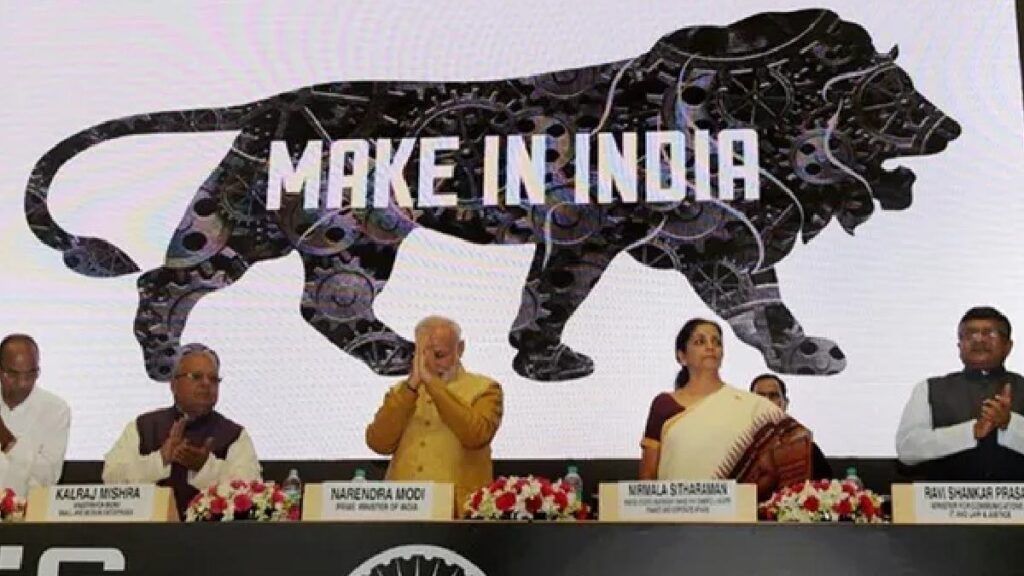Today, September 25, 2024, marks a significant milestone in India’s journey towards becoming a manufacturing and innovation powerhouse. The ‘Make in India’ initiative, launched by Prime Minister Narendra Modi in 2014, has completed 10 years of its successful journey. On this occasion, PM Modi has expressed his gratitude to all Indians who have contributed to the initiative’s “roaring success”
A Decade of Transformation
The ‘Make in India’ initiative has been instrumental in transforming India’s economy and industrial landscape over the past decade. Launched in 2014, the initiative aimed to make India a global manufacturing hub by encouraging foreign investment, promoting innovation, and developing infrastructure.
From Import-Dependent to Self-Reliant
In the past decade, India has made significant strides in reducing its dependence on imports. The ‘Make in India’ initiative has helped increase domestic production, making India self-reliant in various sectors. For instance:
- India has become a net exporter of finished steel, with production increasing by over 50% since 2014.
- The country has also become the second-largest mobile manufacturer globally, with mobile exports increasing from Rs 1,556 crore to Rs 1.2 lakh crore, a 7500% increase.
Infrastructure Development
The ‘Make in India’ initiative has led to significant investments in infrastructure development, including:
- Upgradation of ports and airports to facilitate trade and commerce.
- Development of industrial corridors and smart cities to provide a conducive business environment.
- Improvement in transportation networks, including roads, railways, and highways.
Innovation and R&D
The initiative has also encouraged innovation and R&D in various sectors, including:
- Aerospace and defence manufacturing.
- Renewable energy and clean technology.
- Pharmaceuticals and biotechnology.
- Automotive and electric vehicles.
Job Creation and Skill Development
The ‘Make in India’ initiative has created millions of jobs across various sectors, both directly and indirectly. The initiative has also led to significant investments in skill development, with a focus on:
- Vocational training and education.
- Apprenticeships and on-the-job training.
- Development of sector-specific skills.
Challenges and Opportunities
While the ‘Make in India’ initiative has achieved significant success, there are still challenges that need to be addressed. These include:
- Improving the ease of doing business in India.
- Enhancing competitiveness and productivity.
- Addressing environmental and social concerns.
However, the initiative also presents opportunities for further growth and development, including:
- Increasing exports and expanding into new markets.
- Encouraging innovation and R&D in emerging technologies.
- Developing India as a global hub for manufacturing and innovation.
Overall, the ‘Make in India’ initiative has been instrumental in transforming India’s economy and industrial landscape over the past decade. As the initiative looks to the future, it is poised to play a crucial role in shaping India’s economic growth and development.
Key Achievements
The ‘Make in India’ initiative has achieved several milestones over the past decade. Some of the key achievements include:
- Mobile manufacturing: India has become the second-largest mobile manufacturer globally, with mobile exports increasing from Rs 1,556 crore to Rs 1.2 lakh crore, a 7500% increase.
- Steel industry: India has become a net exporter of finished steel, with production increasing by over 50% since 2014.
- Semiconductor manufacturing: The sector has attracted investments worth over Rs 1.5 lakh crore, with five plants approved that will have a combined capacity of more than 7 crore chips per day.
- Renewable energy: India is the fourth-largest producer of renewable energy globally, with capacity increasing by 400% in just a decade.
- Electric vehicle industry: The industry is now worth USD 3 billion, with exports increasing by 239%.
- Defence production: Exports have soared from Rs 1,000 crores to Rs 21,000 crore, reaching over 85 nations.
Government’s Commitment
The Government of India is committed to encouraging ‘Make in India’ through all possible ways. PM Modi has reiterated the government’s commitment to making India a manufacturing and innovation powerhouse.
Conclusion
As ‘Make in India’ completes 10 years, it is a testament to the collective resolve of 140 crore Indians to transform the nation into a manufacturing and innovation powerhouse. PM Modi’s vision for a self-reliant India has been instrumental in driving the initiative’s success. As India looks to the future, the ‘Make in India’ initiative is poised to play a crucial role in shaping the country’s economic growth and development.


